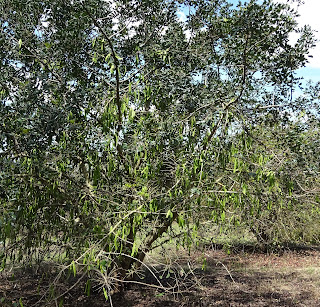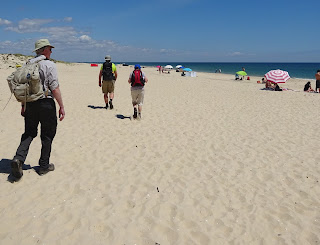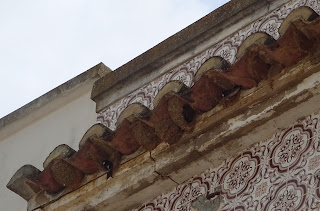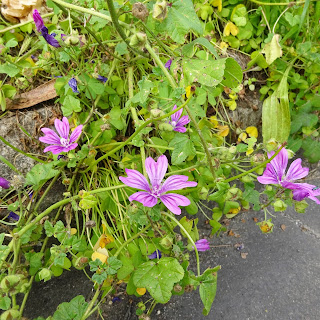Today’s scenery was very different than yesterday’s because we were up in a national forest. To begin with, I must explain that Portugal
was completely deforested almost 150 years ago.
With deforestation came soil erosion and lack of water retention in the
dry soils.
To solve that problem, based on the work of a British
botanical collector in the 1850’s, it was decided to plant 35,000 Eucalyptus
trees to thwart the deterioration. The
plan succeeded all too well because the Eucalyptus took over everything,
crowding out native plants and supporting no wildlife. Eucalyptus forests need fire to regenerate,
and it is hard to say how fires will be treated here. There is obvious clearing of trees but who
knows how effective that will be.
I thought that a picture of the Eucalyptus and an Opuntia cactus seemed like a good cross-cultural mix.
From the forest mountaintops we descended to arable land
that included almond groves, pine plantations, persimmon trees and market
gardens.
And (how could I possibly forget?) , for the winos in the bunch.........
There were some tremendous “castles” in the countryside,
some belonging to prosperous farms and some belonging to foreign ownership.
The roads were dry, with various sedimentary formations
describing the landscape.
Despite going on the more challenging level walk (13 km with 180 metres of ascent), we were forced to stop at a local bed and breakfast operation offering tea (or beer/wine) and cake before reboarding the bus. Life is tough. Temperatures were in the mid-20’s today with unrelenting sun; we will sleep well tonight.
As usual, the wildflowers continued to be a feature along
the way, with lavender and gorse as some of the ones I recognized.






















































